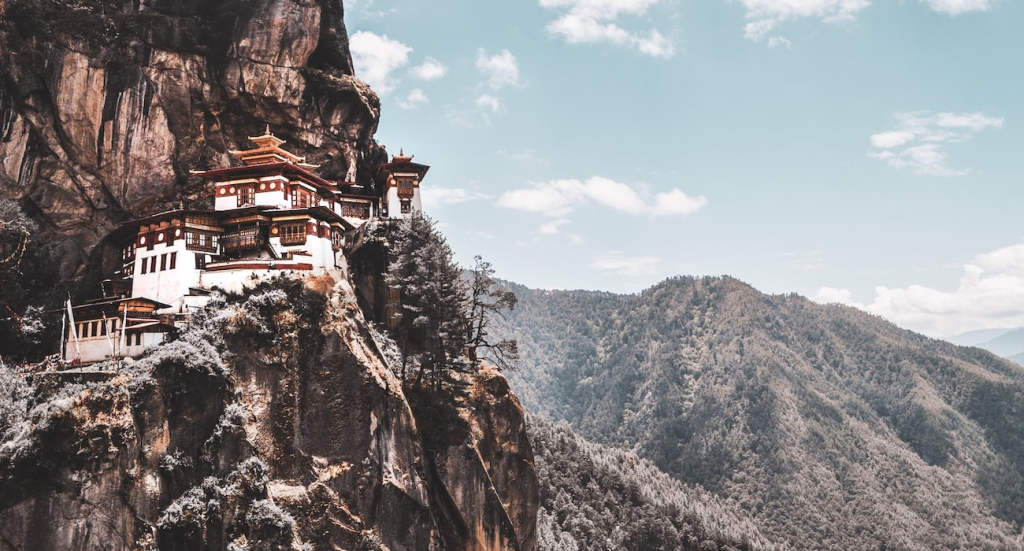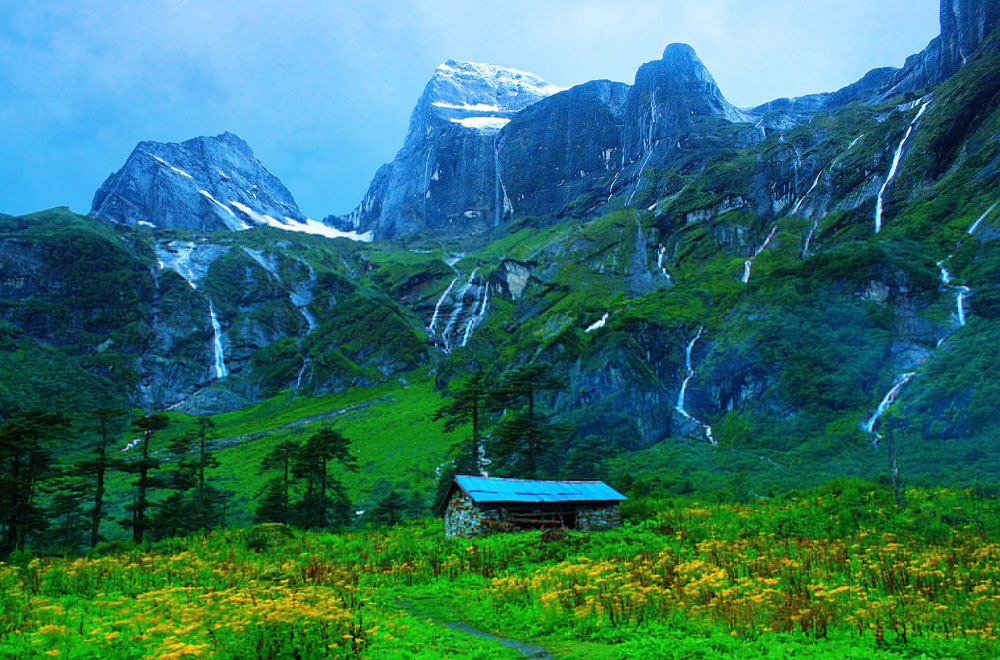Bhutan, a country of soaring peaks and pristine landscapes, is widely known as the “Land of the Thunder Dragon.” Yet beneath this dramatic exterior lies an even more enigmatic layer of cultural and spiritual identity. Here, in the eastern Himalayas, exist the Baeyuls—sacred valleys that have, for centuries, served as sanctuaries of refuge, enlightenment, and ecological harmony. These “hidden lands” (Beyul in Dzongkha: བེ་ཡུལ་) are steeped in myth and tradition, their origins interwoven with the spiritual legacy of Guru Rinpoche and the profound cosmology of Tibetan Buddhism.
In this blog post, we explore the significance of Bhutan’s Baeyuls. We get into the mythological foundations that gave birth to these hidden sanctuaries, examine the spiritual and cultural roles they continue to play, and discuss the contemporary challenges that threaten to alter their ancient landscapes.

Guru Rinpoche and the Creation of Beyuls
The legend of Bhutan’s Baeyuls is inseparable from the life and teachings of Guru Rinpoche—also known as Padmasambhava, the “Second Buddha.” According to Bhutanese tradition, Guru Rinpoche visited Bhutan on three transformative journeys between 810 and 876 CE. During these expeditions, he performed acts of healing, subjugated malevolent spirits, and sanctified remote valleys to serve as beacons of hope and refuge for future generations.
One of the most compelling narratives recounts Guru Rinpoche’s first visit, during which he healed King Sindhu Raja of Bumthang. The king, whose life force had been diminished by the wrath of a local deity known as Shelging Karpo, found solace in the compassionate intervention of Guru Rinpoche. This act of divine intervention was not merely a display of supernatural power but a profound moment of transformation, setting in motion the process by which Bhutan itself was consecrated as a sacred space.
During his subsequent journeys, Guru Rinpoche is believed to have hidden terma—spiritual treasures in the form of texts, relics, and rituals—in secluded valleys. These treasures were not simply artifacts but living repositories of wisdom, designed to be revealed in times of need by tertons (treasure revealers). The valleys where these terma were hidden came to be known as Beyuls, designated as sanctuaries where future generations could seek spiritual refuge amid times of turmoil. In essence, Bhutan was transformed into a “Beyul Chenpo” or “Great Hidden Land,” a living fortress of spiritual integrity shielded from external corruption.


The idea of hidden valleys resonates deeply with Tibetan Buddhist cosmology. Beyuls are envisioned as earthly reflections of Guru Rinpoche’s pure lands—transcendent realms where the boundaries between the physical and spiritual worlds blur. Ancient terma texts, discovered by later tertons, offer poetic and symbolic maps to these sanctified spaces, guiding devout pilgrims toward sites where divine energies converge and protect.
Pre-Buddhist Influences and Archaeological Traces
Long before the advent of Buddhism, Bhutan’s rugged terrain was inhabited by animistic communities whose reverence for local deities and natural forces laid the groundwork for the spiritual landscape we see today. Indigenous beliefs, which honored local spirits such as nyen, lu, and tsen, permeated the natural world. When Guru Rinpoche arrived and began his spiritual mission, he did not seek to erase these earlier traditions but rather to integrate and transform them. His dramatic subjugation of malevolent local spirits—such as Shelging Karpo—not only established Buddhism’s dominion over the landscape but also created a syncretic framework in which indigenous beliefs and Buddhist practice could coexist harmoniously.
Archaeological evidence, though limited by the rugged and remote nature of Bhutan’s terrain, hints at early human settlements and the pre-Buddhist sacrality of certain locations. Excavations in regions like Bumthang have uncovered 8th-century stone structures and remnants of pottery, suggesting that some of these sacred sites may have originally been revered by earlier inhabitants. While systematic archaeological research remains sparse, these findings lend credence to the notion that the valleys designated as Beyuls were once vibrant centers of cultural and spiritual life long before they were redefined by Buddhist influence.

